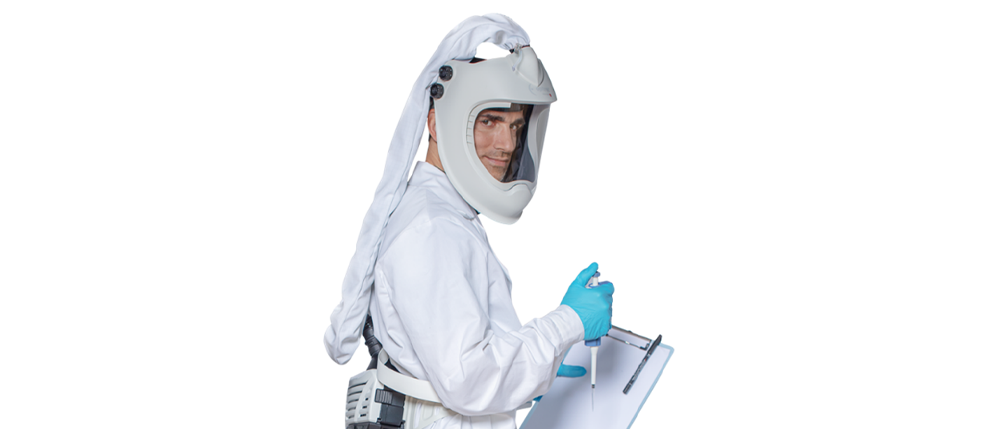Understanding Powered Air

A Powered Air Purifying Respirator (PAPR) is a type of respiratory protective equipment (RPE) worn as a final line of defence against respiratory hazards in the workplace. Other forms of RPE include half masks, full face masks and filtering face pieces (also known as FFP1/FFP2/FFP3).
PAPR devices consist of a motorised fan unit, battery, filter casing and head gear.
The battery assisted fan (often called a blower unit) draws air from the environment into the device through the attached filter. Once cleansed, the filtered air is delivered to the user’s headgear usually through a sealed hose. Air is continually drawn in through the device providing a continuous supply of filtered air to the user.
Unlike tight-fitting respirators, loose-fitting PAPRs have no breathing resistance as the air is mechanically brought through the filter and the wearer’s breathing zone is uninterrupted. This allows the devices to be worn for extended periods of time without the need for breaks, unlike tight-fitting RPE which should be worn for no more than 1 hour at a time.[1]
The continuous supply of air creates positive-pressure within the headgear, preventing contaminated air from seeping in – all without the need of tight-fitting seals.
Depending on the specific make/model of the PAPR device, they can be customisable to better suit the needs of the worker and their environment. Many PAPRs have adjustable air flow rates for added comfort, are compatible with a range of filters for protection against different respiratory hazards, and can be used with different types of headgear such as loose-fitting hoods, tight-fitting half masks and full-face masks.
Since PAPR devices fitted with a loose-fitting do not rely on tight-fitting seals, a fit test is not required. This makes PAPRs particularly useful for those who:
- have facial hair,
- have not had a face fit test,
- cannot pass a face fit test on the model/s provided,
- are unable to wear tight fitting RPE for medical reasons such as soreness or claustrophobia, and/or
- are requiring protection for extended lengths of time (over one hour).
For more information on respiratory protection, RPE, and PAPR devices, get in touch and speak with one of our Fit2Fit accredited experts today.
[1] “[…] continuous wear time for tight-fitting (unpowered) RPE is less than an hour, after which the wearer should take a break.” Respiratory Protective Equipment at Work – HSG53, Pg 18 https://www.hse.gov.uk/pubns/priced/hsg53.pdf

